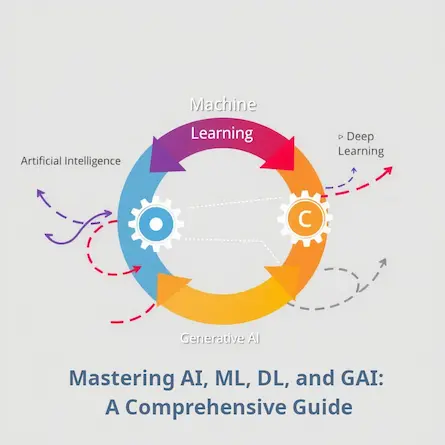
Flow Engineering and Prompt Engineering: Unlocking the Power of Large Language Models
- Ctrl Man
- AI , Machine Learning , Natural Language Processing
- 09 May, 2024
Flow Engineering vs Prompt Engineering
Introduction
As AI continues to evolve, two terms have emerged as crucial components in interactions with large language models (LLMs). Flow Engineering and Prompt Engineering are often debated topics among tech enthusiasts, with each approach having its own strengths and weaknesses.
Flow Engineering is a more recent concept that focuses on the entire flow of interaction between humans and LLMs. It involves crafting a sequence of prompts and responses to guide the AI towards a specific goal or outcome. This approach is particularly useful for complex tasks that require multiple steps, such as developing software or conducting multi-stage data analysis.
Prompt Engineering, on the other hand, is a more established concept that focuses on crafting individual prompts to elicit specific responses from LLMs. It involves understanding the AI’s capabilities and limitations to create effective prompts that produce desired outputs. This approach is often used for straightforward tasks or when a single, specific output is required.
The debate between Flow Engineering and Prompt Engineering reflects the evolving nature of human-AI interactions. While both approaches have their merits, they cater to different use cases and user preferences. Flow Engineering is ideal for complex tasks that require iterative refinement, whereas Prompt Engineering excels at producing quick and accurate results.
In conclusion, understanding the differences between Flow Engineering and Prompt Engineering can help tech enthusiasts optimize their interactions with LLMs. By choosing the right approach, users can unlock the full potential of AI-powered tools and achieve better outcomes in various applications.
Advanced Techniques for Crafting Effective Prompts
Crafting effective prompts is a crucial aspect of both Flow Engineering and Prompt Engineering. A well-crafted prompt can significantly impact the quality and accuracy of the AI’s response. Here are some advanced techniques to consider:
- Use specific, concrete language: Avoid vague or ambiguous language that might lead to misinterpretation.
- Provide context: Give the AI a clear understanding of the task, problem, or topic you’re addressing.
- Ask focused questions: Instead of asking broad, open-ended questions, ask targeted, specific ones that elicit precise responses.
- Use active voice: Write prompts in an active voice to encourage the AI to generate more engaging and informative content.
By incorporating these techniques into your prompt-crafting process, you can significantly improve the quality of the AI’s response.
Strategies for Optimizing the Flow of Interactions with LLMs
Optimizing the flow of interactions with Large Language Models (LLMs) is crucial in both Flow Engineering and Prompt Engineering. Here are some strategies to consider:
- Use feedback loops: Encourage the AI to refine its responses by incorporating feedback mechanisms, such as rating systems or explicit corrections.
- Iterate on prompts: Refine your prompts based on the AI’s responses, adjusting language, tone, and specificity to elicit better results.
- Monitor response quality: Regularly assess the quality of the AI’s responses, identifying areas for improvement and refining your approach accordingly.
- Use multiple models: Experiment with different LLMs or models to find the best fit for your specific
Real-World Applications of Flow Engineering and Prompt Engineering
Flow Engineering and Prompt Engineering have numerous real-world applications across various industries. Here are a few examples:
Software Development:
- Code Generation: Flow Engineering can be used to generate code snippets for developers, reducing the time spent on repetitive tasks.
- Bug Fixing: Prompt Engineering can help identify and fix bugs by crafting targeted prompts that elicit specific information from the AI.
Data Analysis:
- Data Visualization: Flow Engineering can assist in creating interactive data visualizations, enabling users to explore complex datasets more effectively.
- Predictive Modeling: Prompt Engineering can be used to craft prompts that help LLMs predict outcomes and identify patterns in large datasets.
Content Creation:
- Article Writing: Flow Engineering can aid in generating article outlines, summaries, or even entire articles on a given topic.
- Social Media Management: Prompt Engineering can help create engaging social media posts, tweets, or captions that resonate with target audiences.
These applications demonstrate the potential of Flow Engineering and Prompt Engineering to streamline workflows, improve accuracy, and enhance creativity across various industries.
Benefits and Limitations of Flow Engineering and Prompt Engineering
Flow Engineering
Benefits of Flow Engineering
- Improved accuracy: By guiding the AI through a sequence of prompts, users can ensure that the output is accurate and relevant.
- Increased efficiency: Flow Engineering can reduce the time spent on tasks by automating repetitive or mundane steps.
- Enhanced creativity: The iterative process of Flow Engineering can foster creative thinking and problem-solving.
Limitations of Flow Engineering
- Complexity: Flow Engineering requires a deep understanding of the AI’s capabilities and limitations, as well as the specific task at hand.
- Dependence on AI performance: The quality of the output depends heavily on the AI’s ability to understand and respond accurately to each prompt.
Prompt Engineering
Benefits of Prompt Engineering
- Flexibility: Prompt Engineering allows users to craft prompts that can be used across multiple tasks or applications.
- Easy adaptation: New prompts can be easily created or modified as needed, without requiring significant changes to the underlying AI architecture.
- Cost-effective: Prompt Engineering can reduce the need for extensive training data or complex algorithms.
Limitations of Prompt Engineering
- Limited scope: Prompt Engineering is typically used for specific tasks or applications, limiting its applicability across broader domains.
- Dependence on prompt quality: The effectiveness of Prompt Engineering relies heavily on the quality and relevance of the prompts themselves.
Comparison
While both Flow Engineering and Prompt Engineering have their strengths and weaknesses, they can be used in tandem to achieve better results. By combining the iterative approach of Flow Engineering with the flexibility of Prompt Engineering, users can unlock the full potential of AI-powered tools.
Future Directions and Implications of Flow Engineering and Prompt Engineering
As AI continues to evolve, Flow Engineering and Prompt Engineering are likely to play increasingly important roles in shaping the future of human-AI interactions.
Future Directions
- Advancements in AI capabilities: As AI models become more sophisticated, they will be able to handle more complex tasks and respond to a wider range of prompts.
- Increased use in industries: Flow Engineering and Prompt Engineering are likely to become essential tools in various industries, such as healthcare, finance, and education.
- Development of new applications: The combination of Flow Engineering and Prompt Engineering will enable the creation of innovative applications that were previously unimaginable.
Implications
- Job market changes: As AI becomes more prevalent, some jobs may become automated, while others may require new skills and expertise in working with AI-powered tools.
- Shifts in education: The increasing importance of Flow Engineering and Prompt Engineering will likely lead to changes in educational curricula, focusing on developing skills for effective human-AI collaboration.
- Ethical considerations: As AI becomes more integrated into our daily lives, it is essential to consider the ethical implications of using Flow Engineering and Prompt Engineering, such as ensuring transparency, accountability, and fairness.
Conclusion
Flow Engineering and Prompt Engineering are powerful tools that have the potential to revolutionize the way we interact with AI. By understanding their benefits, limitations, and future directions, we can better prepare ourselves for a world where humans and AI collaborate seamlessly.









